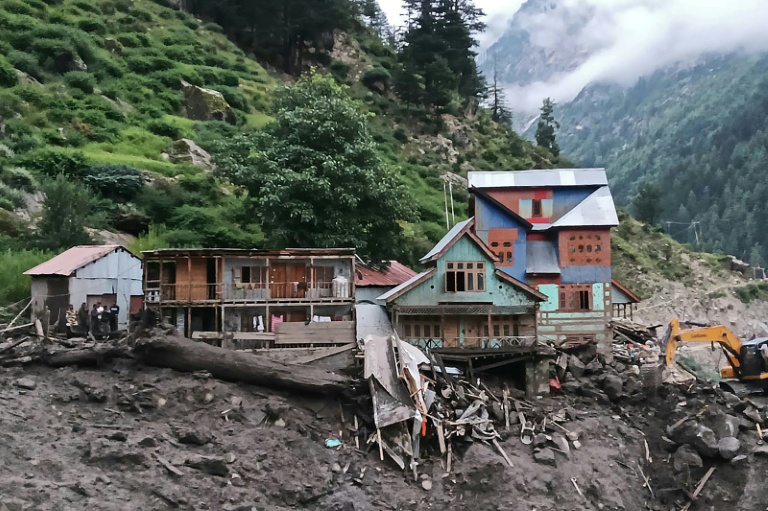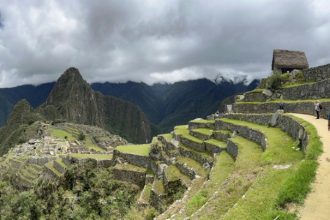Indian rescuers pulled bodies from mud and rubble Friday after the latest deadly flood to crash through a Himalayan village killed at least 60 people and washed away dozens more.
Torrents of water and mud driven by intense rain tore through Chisoti village in Indian-administered Kashmir on Thursday, leaving dozens missing, including Hindu pilgrims who were visiting a shrine.
It is the second major deadly flooding disaster in India this month.
Officials said a large makeshift kitchen in Chisoti, where more than 100 pilgrims were, was completely washed away by what Kashmir Chief Minister Omar Abdullah reported was a sudden “cloudburst” rain storm.
Arun Shah, 35, had just completed his pilgrimage with his family when the flood struck.
“It was horrifying”, he told AFP, speaking by telephone from a hospital in Kishtwar district, where Chisoti is located.
“Boulders and a rush of water came down from the mountain. We all got separated while trying to save ourselves,” he said.
Kishtwar district hospital head Yudhvir Kotwal told AFP more than 100 people were brought in after the disaster.
“Most of the injured had head injuries, fractured bones and ribs,” Kotwal said, adding that “dead bodies are still being retrieved from under the mud and rubble”.
Heavy earthmovers were brought to the disaster area to dig through deep mud.
The army’s White Knight Corps said its troops, “braving the harsh weather and rugged terrain, are engaged in evacuation of injured”.
Emergency supplies including ropes and digging tools were being brought to the disaster site, with the army supporting other rescue teams.
Mohammad Irshad, a top disaster management official, told AFP on Friday that “60 people are recorded dead”, with 80 people unaccounted for.
Floods and landslides are common during the June-September monsoon season, but experts say climate change, coupled with poorly planned development, is increasing their frequency, severity and impact.
Floods on August 5 overwhelmed the Himalayan town of Dharali in India’s Uttarakhand state and buried it in mud. The likely death toll from that disaster is more than 70 but has not been confirmed.
The UN’s World Meteorological Organization said last year that increasingly intense floods and droughts are a “distress signal” of what is to come as climate change makes the planet’s water cycle ever more unpredictable.
Roads had already been damaged by days of heavy storms in Kishtwar district. The area lies more than 200 kilometres (125 miles) by road from the region’s main city Srinagar.
Prime Minister Narendra Modi addressed the spate of disasters in his Independence Day speech in New Delhi on Friday.
“In the past few days, we have been facing natural disasters, landslides, cloudbursts, and many other calamities,” he said.
“Our sympathies are with the affected people. State governments and the central government are working together with full strength.”
pzb-pjm/sco









